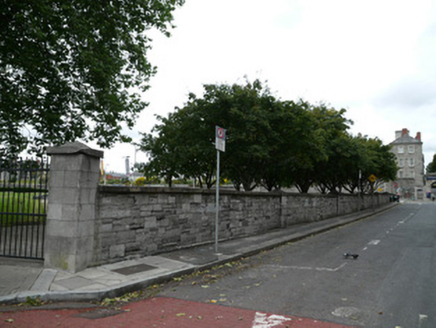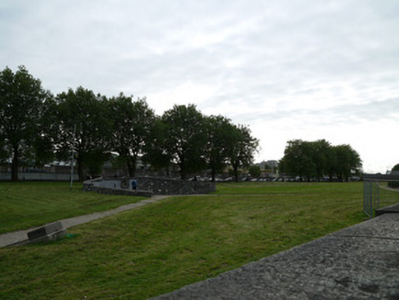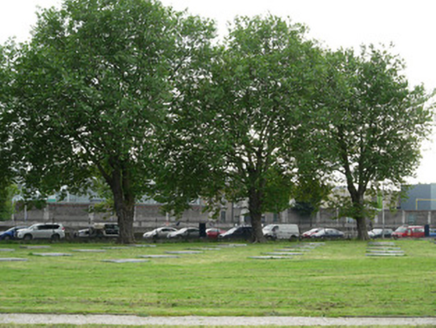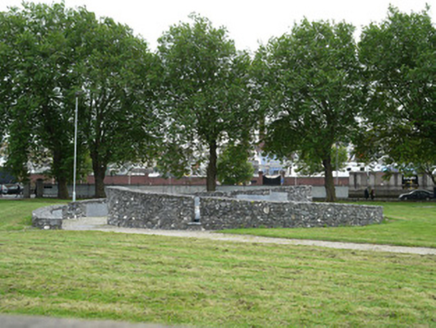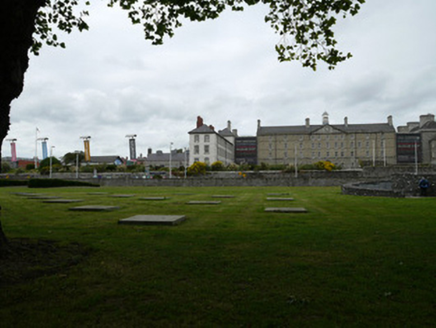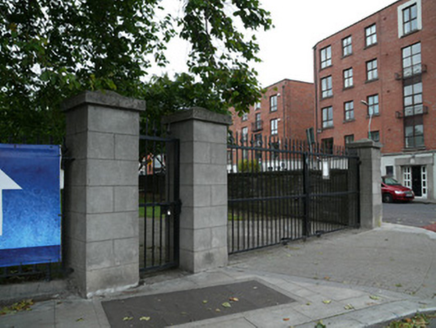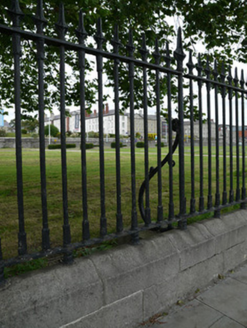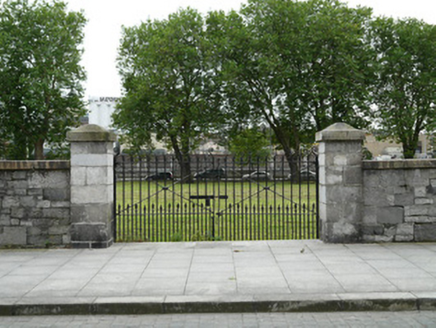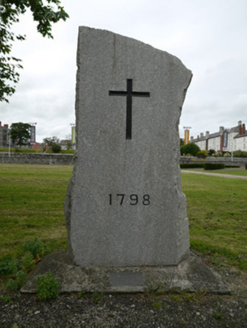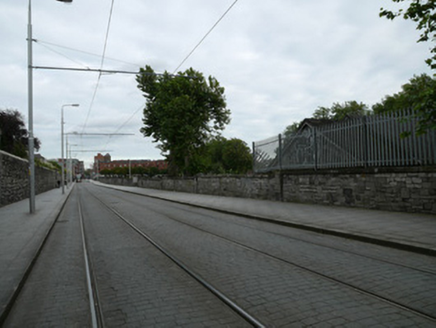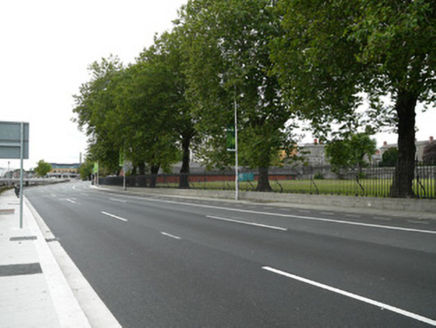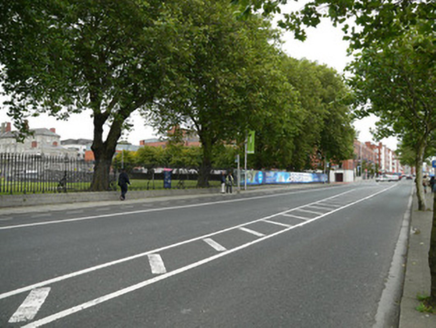Survey Data
Reg No
50070150
Rating
Regional
Categories of Special Interest
Historical, Social
Previous Name
The Esplanade
Original Use
Barracks
In Use As
Park
Date
1850 - 1890
Coordinates
314100, 234372
Date Recorded
27/09/2012
Date Updated
--/--/--
Description
Rectangular-plan park, enclosed c.1870, former military exercise ground to Collins Barracks. Recently constructed stone monuments commemorating historical use as burial ground following 1798 rebellion. Lawn throughout, compacted gravel paths, London Plane trees to southern edge, maple trees to east edge. Granite stone plinth with cast-iron railings to south boundary. Cast-iron railings, gates, red brick elevation of neighbouring building to west boundary. Snecked limestone retaining wall with parapet with granite capping to north boundary, snecked limestone wall with granite capping to east boundary. Cast-iron entrance gates with square-profile rendered piers to east end of south boundary. Recent steel pedestrian entrance gate to east end of north boundary. Double-leaf wrought-iron gates to with square-profile cut limestone piers with granite capstones to north boundary.
Appraisal
This site is known as Croppies' Acre as it has long been believed to be the burial ground for many of those executed following the 1798 rebellion, called 'croppies' or 'croppys' due to their short hair. Court martials were held at the Royal Barracks (now Collins Barracks) immediately to the north of this site. Stone monuments were added in 1998 to commemorate those who were executed following the rebellion. While the archaeological excavations prior to these works found no human remains, the site is nonetheless important as a focal point for remembrance of the United Irishmen rebellion in folk memory. The park is well maintained and offers an uninterrupted view of Collins Barracks from the Liffey. Rocque's map of Dublin shows that the southern part of the site was marshy in the mid-eighteenth century, while a number of houses were built on the Barrack Street (now Benburb Street) boundary at the time. These were demolished some time in the late nineteenth century, as it had become a military exercise ground known as the Esplanade by 1907.
